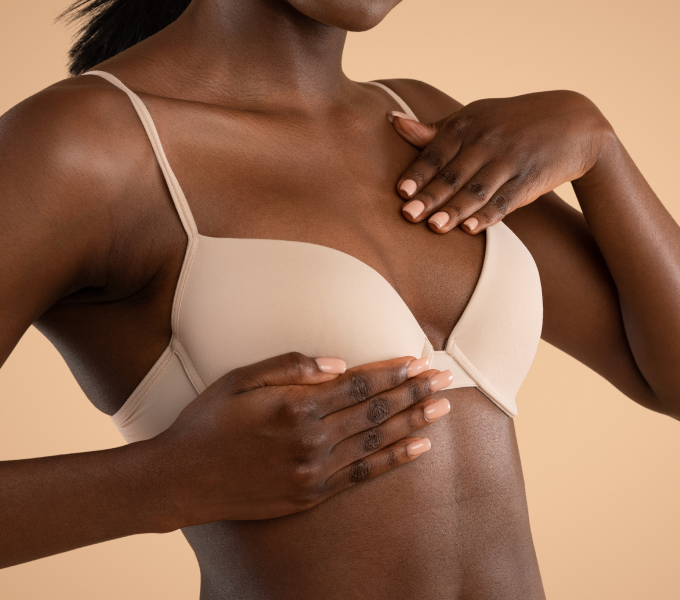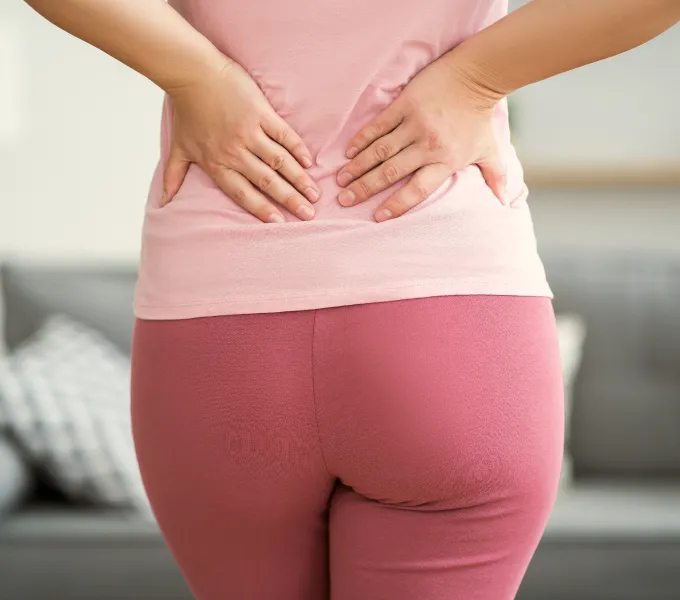
Hand & Wrist Pain: Is It Carpal Tunnel or De Quervain's?
As if there weren't enough studies that encourage us to ‘unplug’ from our devices to get better sleep, improve our mental health, and deepen our personal relationships, the physical side effects of sending that millionth email and text can be really harmful to your wrists and thumbs.
If you’re experiencing frequent sharp pain, numbness, tingling, or burning sensations in your fingers, wrists, and thumbs, there’s a chance that you might have Carpal Tunnel Syndrome or De Quervain’s Tenosynovitis. And, although the common age range for these conditions to arise is between 40-60 years old, women glued to their phones and laptops are at a higher risk for developing Carpal Tunnel Syndrome and De Quervain’s Tenosynovitis at younger ages.
While the symptoms for these two conditions may feel similar, read below to find out what makes them different and how to get relief.
Carpal Tunnel Syndrome vs. De Quervain’s Tenosynovitis
Carpal Tunnel Syndrome occurs when there’s pressure on the median nerve, which runs along the length of your arm as it moves through the carpal bones and under a tendon at the base of your wrist. This condition causes pain and numbness in the hands, wrist, and all fingers except the pinky, and may even cause weakness in your grip.
De Quervain’s Tenosynovitis on the other hand, occurs when the tendons in the wrist and thumb become inflamed, which generates pain that can travel all the way up the forearm.
Carpal Tunnel Syndrome is helpfully named after the carpal bones and tendons that it impacts. Wondering where your ‘De Quervain’ is located? Don’t worry, you didn’t miss a body part in high school anatomy class — De Quervain’s Tenosynovitis is named after the surgeon who was the first to write about it.
Symptoms of Carpal Tunnel & De Quervain’s
Symptoms of Carpal Tunnel Syndrome
Because the median nerve controls the movement and feeling in your thumbs and fingers (except the pinky), compression of this nerve can cause a variety of symptoms, including:
- Tingling and burning of the palm side of your hand, thumbs, index and half of the middle finger, which can also sometimes run up your arm.
- Numbness or lack of feeling in the same area of your thumbs and fingers.
- Difficulty picking up items, pinching, and coordinating the thumbs and hands in some cases.
These symptoms affect 3.8% of the population, predominantly women.
Symptoms of De Quervain’s Tenosynovitis
Symptoms of De Quervain’s Tenosynovitis are also 8 to 10 times more likely to affect women than men, with some of the most common signs reported being:
- Pain and tenderness in the thumb and wrist
- Swelling at the base of the thumb and wrist
- Difficulty using the thumb and wrist to hold objects, pinch, and more.
While some of the symptoms overlap, one of the main differences between Carpal Tunnel Syndrome and De Quervain’s Tenosynovitis is the primary location of the pain or tenderness. Carpal Tunnel Syndrome can be more widespread throughout the fingers and wrist, while De Quervain’s Tenosynovitis is more localized to the thumb and wrist (and sometimes the forearm).
Why do both happen to women more often? We’ll get into that below.
Causes of Carpal Tunnel & De Quervain’s
The anatomy and diverse functions of our hands are really quite amazing. We’ll spare you the minute details, but with 27 bones, over 30 muscles, 3 nerves, and an extensive and efficient network of tightly situated ligaments and tendons that allow for both strength and the nimble precision that is needed to button the onesie of a restless toddler, there is unfortunately a significant vulnerability for injury.
Many of the causes of Carpal Tunnel Syndrome and De Quervain’s Tenosynovitis are quite similar — inflammation or swelling that may compress the median nerve, or impact the function of the tendons in the hands.
Direct injury to the tendons can lead to De Quervain’s. More commonly, overuse of your wrists and hands can lead to both conditions. Overuse can occur in sports that require the same motion over and over such as tennis and skiing, or hobbies like gardening, and they can also occur from repetitive motions like texting or typing with poor wrist mechanics.
Overuse can also look like constantly lifting and holding a newborn, or never-ending diaper changes for an active infant which tax your vulnerable wrists and hands in a way you never expected — this leaves new parents more prone to developing De Quervain’s Tenosynovitis — which is how it got its nickname: Mommy’s Thumb.
Individuals with Carpal Tunnel Syndrome are also more likely to develop the condition if family members have also suffered the same symptoms. Arthritis and diabetes, which can increase inflammation, are common medical causes of both conditions, and hormone changes in pregnancy and in the postpartum can also increase the chance of swelling in your hands.
Diagnosing Carpal Tunnel & De Quervain’s
In today’s fast-paced digital age, everyone is looking for the life hack to make your problems go away. But, if you have pain, numbness, or pins and needles sensations in your wrists, thumbs, and fingers, it might be time to schedule an appointment with your physician or physical therapist to find the actual root cause of your pain. While nobody likes taking time off of work or away from friends and family to recover, there are a number of ways to diagnose Carpal Tunnel Syndrome and De Quervain’s Tenosynovitis early.
Testing for Carpal Tunnel Syndrome
- Your doctor may perform a number of tests, such as Tinel’s Sign, Phalen Test, X-Rays, and Electromyography. Tinel’s Sign and the Phalen Test are conducted without any procedures, and can identify the sensitivity level of your median nerve running through the carpal bones.
Testing for De Quervain’s Tenosynovitis
The main diagnosis for De Quervain’s Tenosynovitis is the Finkelstein test, in which your doctor will apply pressure on the thumb, and bend the wrist to determine tenderness. If pain occurs, it’s a tell-tale sign of the inflammatory condition.
Treatment for Carpal Tunnel & De Quervain’s
If you’re asking, ‘How can I cure my Carpal Tunnel Syndrome?’ or ‘Can I make my De Quervain’s Tenosynovitis go away?’ There are many different treatment methods that can help you get relief from the pain and discomfort that can often feel never-ending. Despite the different causes of Carpal Tunnel Syndrome and De Quervain’s Tenosynovitis, the most popular and effective treatment options for both conditions include:
- Splinting - it’s not the most glamorous fashion statement, but wearing a splint limits your movement to prevent routine overuse and uncomfortable positions that can cause and prolong both Carpal Tunnel and De Quervain’s.
- Avoiding overuse - Taking breaks from your typical routine and finding new ways to accomplish old tasks can lessen flare-ups. Instead of scrolling at night or using the same hand over and over to lift and carry items, switching up your habits can help prevent and ease the pressure of both conditions.
- Icing - For De Quervain’s Tenosynovitis, icing can lessen the pain and burning sensations of the thumbs and wrist. Because the condition tends to flare up at night, icing your hand in bed with a glass of wine and a new Netflix show might be a good addition to your nighttime routine.
- Taking Anti Inflammatories - Anti-inflammatories can help provide short-term relief of symptoms, reducing the inflammation of the hand and wrist.
- Surgery - In extreme cases, studies show that surgery is an effective option for both Carpal Tunnel Syndrome and De Quervain’s Tenosynovitis to help relieve pressure on the respective median nerve and inflamed tendons.
- Physical Therapy - Almost 50% of work-related injuries are connected to Carpal Tunnel Syndrome, and physical therapy is an effective way to holistically treat your symptoms. While most surgeries for Carpal Tunnel Syndrome can take up to 8 weeks without work for recovery, physical therapy is often the best initial treatment option for numbness, pain, and weakness of the wrist and hands. Physical therapy is also an effective tool for De Quervain’s Tenosynovitis, as it helps correct movements that may be causing pain, and strengthen muscles in the wrist, arm, and hand to relieve the pressure and strain of the tendons. Origin offers physical therapy not only for the pelvic floor, but for the whole body at every stage of your life - whether it be a work-related injury, ‘Mommy Thumb,’ and more. Check out the list of treatment areas, including Carpal Tunnel Syndrome and De Quervain’s Tenosynovitis here.
Whether you’re a new mom, a corporate powerhouse, or just someone who spends too much time on your devices, know that it’s never too late to check in with your doctor or PT to find out why your wrists, thumbs, and hands aren’t feeling as strong as they used to. Book a coaching session with a physical therapist to find out more.




